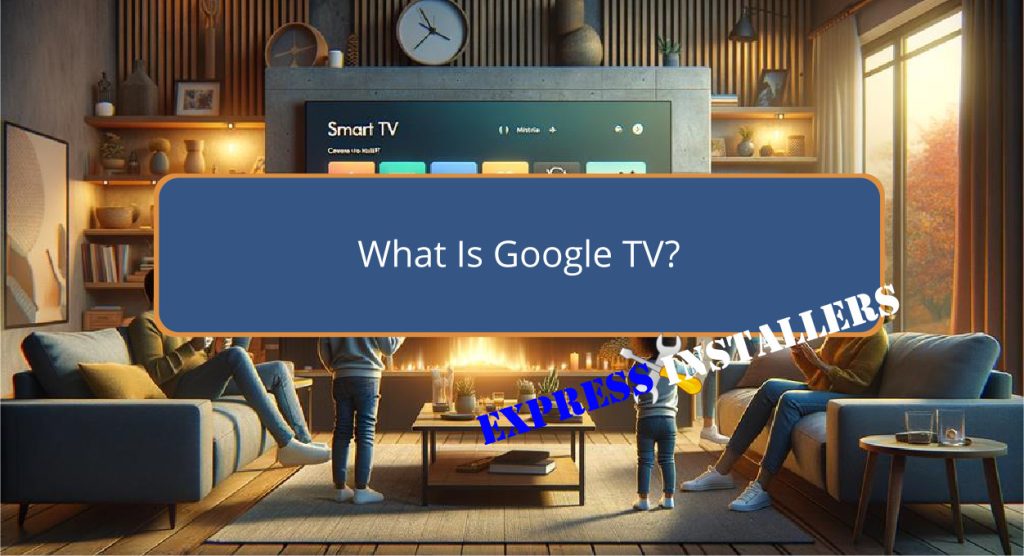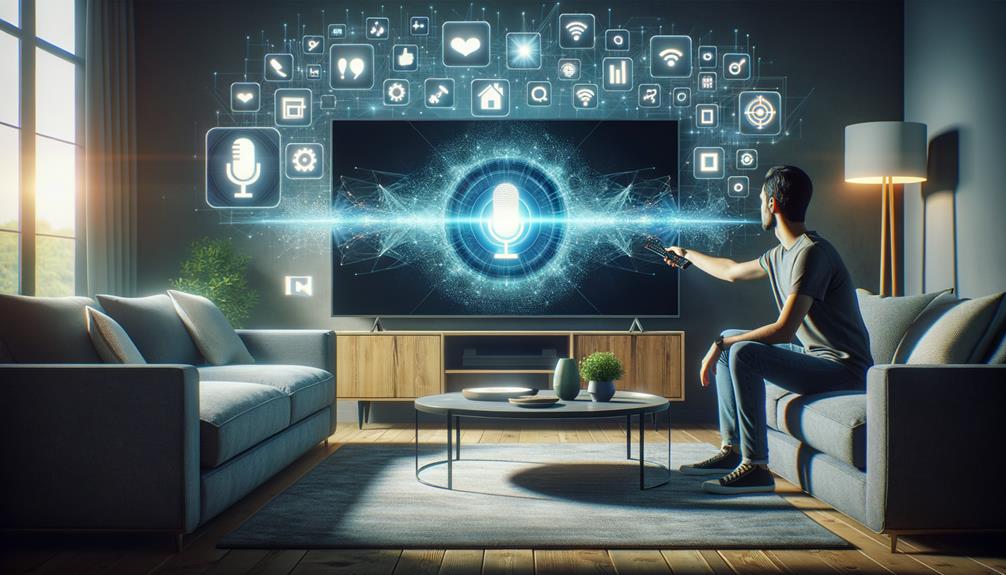
Google TV is a sophisticated streaming interface that enhances media consumption by creatively merging streaming services, live TV, and smart device integration.
It tailors viewing experiences using AI-driven functionalities and integrates with Google’s extensive knowledge graph to provide personalised content recommendations.
The platform also supports robust parental controls and voice search capabilities across various apps, enhancing user interaction and convenience.
Users can access a wide array of content with over 6,500 apps, though availability might vary by geographic location.
Knowing more about Google TV could provide deeper insights into its inclusive features and how they can transform your home entertainment setup.
Quick Summary
- Google TV is a streaming media interface that consolidates various services like live TV and music.
- It offers personalised content recommendations using AI and machine learning.
- Features voice-command searches across all integrated apps and services.
- Compatible with smart home devices for a unified user experience.
- Accessible on over 6,500 apps including movies, TV shows, and games.
Overview of Google TV
Google TV, an advanced user interface designed for streaming media, enhances Android TV by incorporating personalised content recommendations, integrated voice search, and robust parental controls.
As user experience trends evolve, Google TV positions itself at the forefront by leveraging AI-driven functionalities that cater to viewer preferences, guaranteeing a highly tailored viewing experience.
The integration of voice search simplifies content discovery, aligning with the trend towards more interactive and accessible user interfaces.
Looking towards future innovations, Google TV is set to further refine its recommendation algorithms and expand voice functionality, potentially integrating more deeply with other smart home technologies.
This continual innovation guarantees that Google TV remains a competitive player in the rapidly changing landscape of digital media consumption.
Key Features and Benefits
In addition, by consolidating streaming services, live TV, and music into one interface, Google TV offers a streamlined and intuitive user experience.
This integration enhances content discovery by providing curated recommendations that help users effortlessly find new favourite movies and TV shows.
With access to over 10,000 apps, Google TV not only broadens the scope of available entertainment but also tailors it to individual preferences.
Each household member can enjoy a personalised entertainment experience with custom recommendations, watchlists, and even a dedicated children’s space.
This adaptability extends to voice-command searches across all apps, simplifying navigation and interaction.
Moreover, Google TV integrates with smart home devices, elevating the overall user experience by connecting entertainment with everyday convenience.
How Google TV Works

Built on the robust foundation of Android TV, Google TV revolutionises content consumption by curating personalised viewing experiences through advanced algorithms and machine learning.
This interface enhances user experience by seamlessly integrating with Google’s Knowledge Graph to provide tailored recommendations based on individual viewing habits and preferences.
The intelligent use of machine learning guarantees that the more a user engages with content, the more refined the suggestions become, constantly improving the relevancy of displayed content.
Additionally, Google TV prioritises data privacy, employing stringent protocols to manage and protect user data.
This careful balance of personalisation and privacy safeguards maintains user trust while offering a rich, customised viewing experience.
Content Availability
Exploring the wealth of content available on Google TV, users can access over 6,500 apps encompassing movies, TV shows, music, gaming, and more.
The platform’s robust content partnerships with major streaming services like Netflix, Amazon Prime Video, Disney Plus, NBC’s Peacock, and HBO Max guarantee a diverse and extensive library.
These alliances enable Google TV to offer a wide array of US cable shows, live sports, news, and specialised online media, catering to various user preferences and interests.
However, regional restrictions may limit access to certain content in different geographical areas, affecting the overall availability.
This geographical variance necessitates that users may need to verify the availability of specific services in their location.
Voice Control Integration

Google TV seamlessly integrates voice control to enhance user interaction and streamline content navigation.
Leveraging advanced voice recognition technology, this feature allows users to effortlessly interact with their TV using simple voice commands.
Whether it’s playing music, opening applications, or searching for specific content, voice control greatly enriches the user experience.
This integration not only simplifies the task of content discovery but also makes the process more intuitive.
By enabling users to command their television with their voice, Google TV removes the complexity of traditional navigation methods, facilitating a more accessible and engaging interface.
This capability underscores Google TV’s commitment to creating a user-centric platform where convenience and functionality are paramount.
Comparing Android TV and Google TV
While both platforms share a common foundation, Google TV distinguishes itself from Android TV by offering a more curated and user-centric interface focused on content discovery and personalised recommendations.
In the feature comparison, Google TV leverages its Knowledge Graph and advanced machine learning capabilities to enhance user experience differences by presenting more tailored content suggestions directly on the home screen.
This contrasts with Android TV, which provides a more generic interface that requires users to navigate through apps more independently to find content.
Google TV’s integration of voice commands further simplifies the search and control of media, making the interaction smoother and more intuitive, thereby prioritising ease of use and efficiency in content accessibility.
Device Compatibility

Smart TVs from manufacturers such as Sony, TCL, and Hisense are among the devices compatible with Google TV.
This platform also extends its reach to various Android devices and is integrable through the use of Chromecast.
The compatibility with a diverse array of hardware is crucial, as it guarantees a wide audience can access the service.
Google TV’s strength lies in its extensive app compatibility, which includes a plethora of streaming services guaranteeing users have access to a broad spectrum of entertainment options.
Additionally, the commitment to regular firmware updates plays a crucial role in maintaining device compatibility over time, enhancing user experience by introducing new features and improving existing ones, while also addressing any security vulnerabilities.
Setting Up Google TV
Setting up Google TV requires either downloading the app on supported Android devices or integrating a pre-installed streaming device from manufacturers like Sony, TCL, and Hisense.
The installation process is streamlined to guarantee ease of use, with devices like the Google TV Streamer offering a plug-and-play solution that connects directly to your television.
While the setup is generally straightforward, troubleshooting tips are readily available for common issues such as connectivity or compatibility problems.
Once installed, the user interface on Google TV allows for significant customisation options.
Users can curate their viewing experience with features like personalised recommendations and a Watchlist, enhancing interaction and accessibility, making it a user-centric platform.
Sustainability and Recycling Options

Google TV actively supports environmental sustainability through a thorough trade-in and recycling program for outdated streaming devices.
By embracing these initiatives, Google TV greatly contributes to e-waste reduction and lessens the environmental impact of its products.
The trade-in program not only offers users a financial incentive to recycle old devices but also guarantees that these electronics are disposed of responsibly.
In partnership with certified recycling centres, Google TV helps conserve valuable resources and reduce carbon emissions from the manufacturing process.
Users participating in these programs are pivotal in driving the tech industry towards more sustainable practices, reinforcing the importance of recycling partnerships in mitigating the adverse effects of electronic waste on our environment.
Troubleshooting Common Issues
When encountering common issues with Google TV, users may experience difficulties ranging from network connectivity to audio or video playback problems.
These challenges can often be traced back to network connectivity issues, affecting both app performance and smooth streaming of content.
For instance, an unstable or slow internet connection can cause apps to load slowly or interrupt streaming, leading to frustration.
Furthermore, remote control issues, including connectivity or battery problems, can impair navigation and overall user experience.
Additionally, outdated firmware might contribute to various functionality problems, necessitating regular firmware updates to guarantee peak performance and compatibility with the latest apps and features.
Addressing these issues promptly can greatly enhance the user experience on Google TV.
Frequently Asked Questions
Is Google TV Free to Use?
Google TV offers a free base service, enhancing content accessibility through subscription integration with various streaming platforms. However, accessing certain premium content may require additional subscriptions to these integrated services.
What Is Google TV and Why Do I Need It?
Google TV is an advanced interface design enhancing content integration across streaming services. It offers personalised recommendations and simplifies access to entertainment, making it essential for a streamlined and tailored viewing experience.
How Much Does Google TV Cost per Month?
Google TV itself incurs no monthly fees; costs arise from subscription tiers of selected streaming services. Users should review specific service agreements to understand any additional or hidden fees associated with these subscriptions.
What Is the Difference Between a Smart TV and a Google TV?
A Smart TV supports various apps and internet access, while Google TV offers advanced interface customisation and superior app compatibility, streamlining content access and enhancing user interaction for a more personalised viewing experience.
Conclusion
To conclude, Google TV represents a significant advancement in streaming technology, integrating a vast array of content with superior device compatibility and user-friendly voice control.
Its setup simplicity, coupled with robust support for troubleshooting, enhances user experience markedly.
Moreover, Google TV’s commitment to sustainability through recycling options underscores its role in promoting environmental responsibility.
This platform not only modernises home entertainment but also aligns with broader ecological values, setting a benchmark for future technological developments in the streaming industry.
